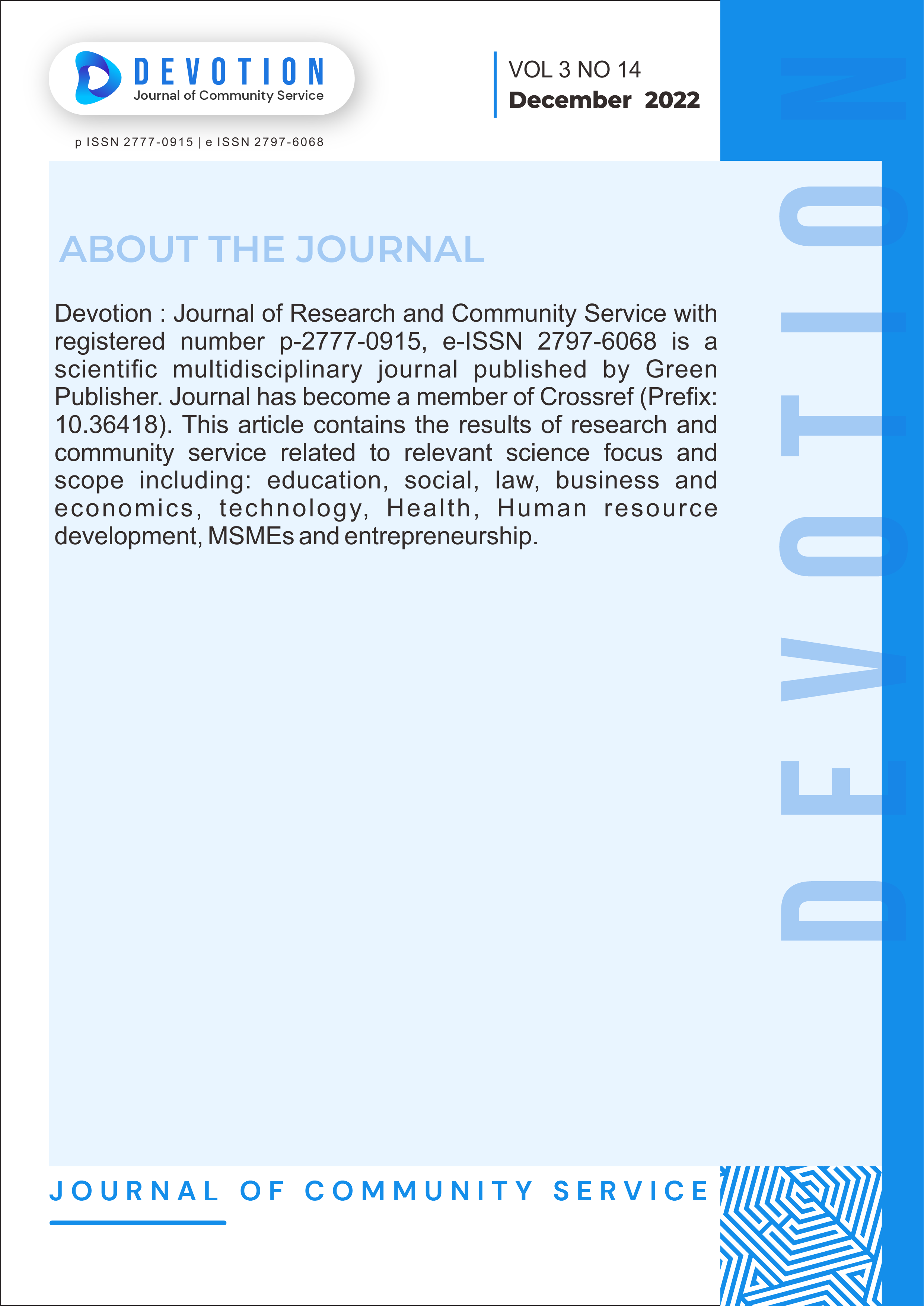Analysis of Time and Cost Control Using The Earned Value Method In Well Pad Hilling and Compacting Work In The PT. Pertamina Hulu Rokan Riau Province
DOI:
https://doi.org/10.36418/dev.v3i14.339Abstract
The development of physical facilities in Indonesia is increasing rapidly along with the promotion of modernization. In the implementation of a project it is very rare to find a project that goes exactly as planned. Generally, they experience delays from what was planned, both in terms of time and progress of work, but there are also projects that experience acceleration from the initial schedule planned. The research objectives were to determine time and cost performance, and to determine cost estimates and final project completion time for the Well Pad stockpiling and compaction project in the Rokan Riau Oil and Gas Block environment. The method used in this study is the Earned Value method which combines the elements of cost and time as well as the physical performance of the work. The data obtained from the project includes the project time schedule, budget plan (RAB), project weekly reports and actual costs, then an analysis of costs, schedules, variances and performance indexes is carried out by explaining the problems that arise during the research. Based on the results of the analysis and discussion, the calculation of the CPI value is> 1 from the 1st week to the 16th week. This means that from the 1st week to the 16th week, the project cost is more economical. The EAS calculation for the 16th week estimates the project completion time is 116 days or 16 weeks. This means that the project is experiencing a delay from the planned schedule. At the end of the review period, an estimated final project cost of Rp. 4,022,024,000.00. And the estimated time for project completion is 116 days, which means the project will be completed in a longer time than planned, which is 211 days.
Published
Issue
Section
License
Copyright (c) 2022 Apde Bonny, Wateno Oetomo, Risma Marleno

This work is licensed under a Creative Commons Attribution-ShareAlike 4.0 International License.
Authors who publish with this journal agree to the following terms:
- Authors retain copyright and grant the journal right of first publication with the work simultaneously licensed under a Creative Commons Attribution-ShareAlike 4.0 International. that allows others to share the work with an acknowledgement of the work's authorship and initial publication in this journal.
- Authors are able to enter into separate, additional contractual arrangements for the non-exclusive distribution of the journal's published version of the work (e.g., post it to an institutional repository or publish it in a book), with an acknowledgement of its initial publication in this journal.
- Authors are permitted and encouraged to post their work online (e.g., in institutional repositories or on their website) prior to and during the submission process, as it can lead to productive exchanges, as well as earlier and greater citation of published work.













